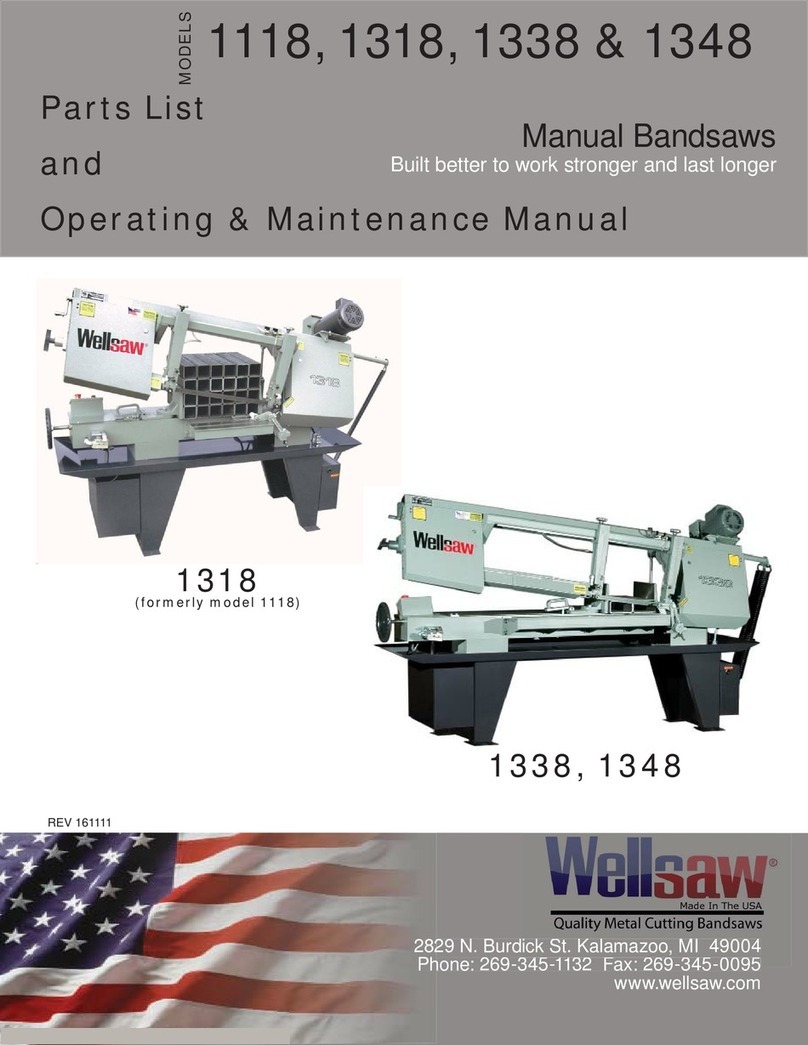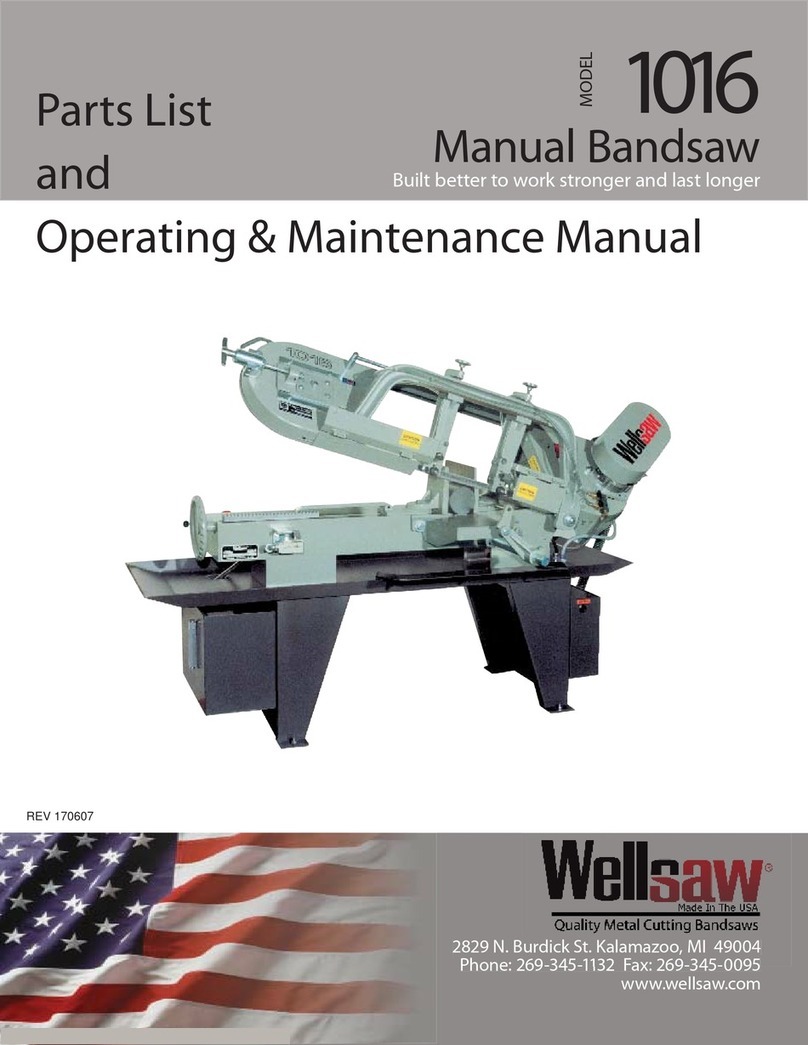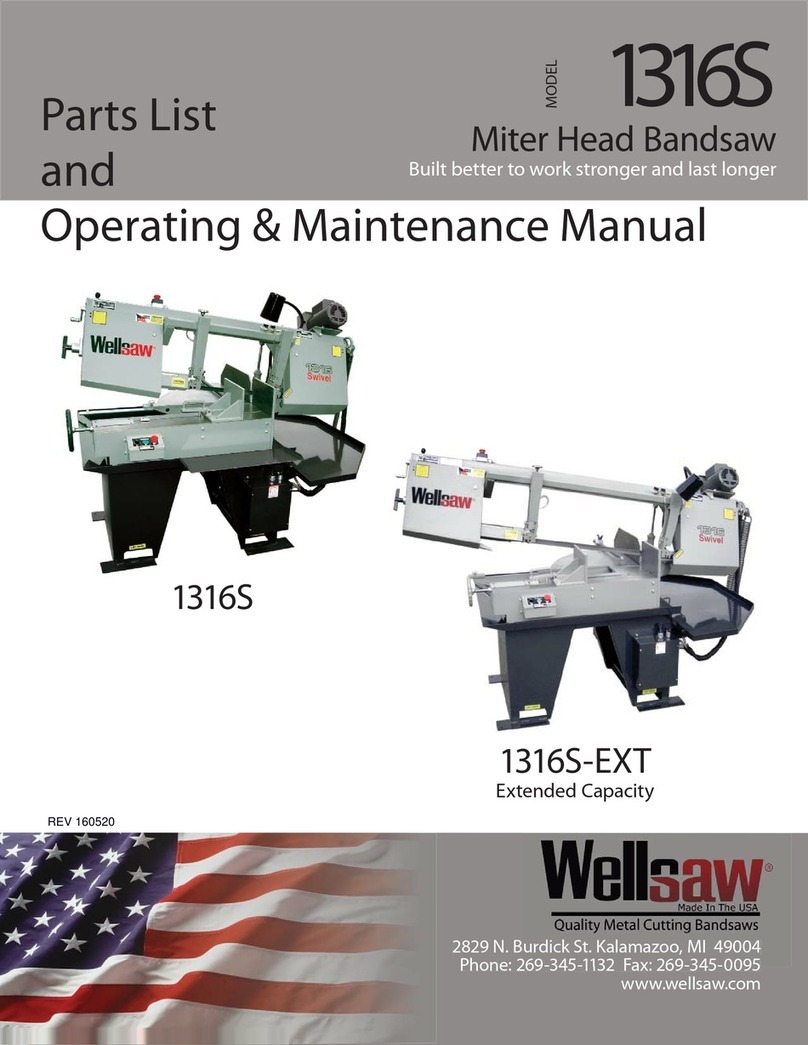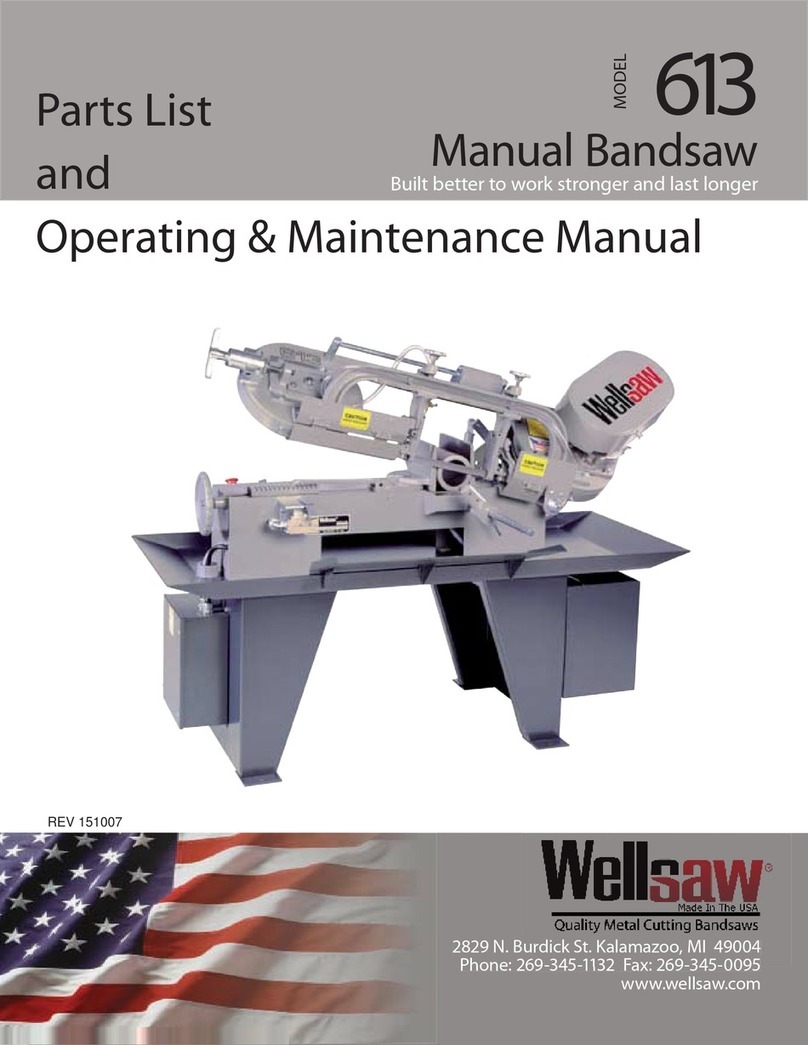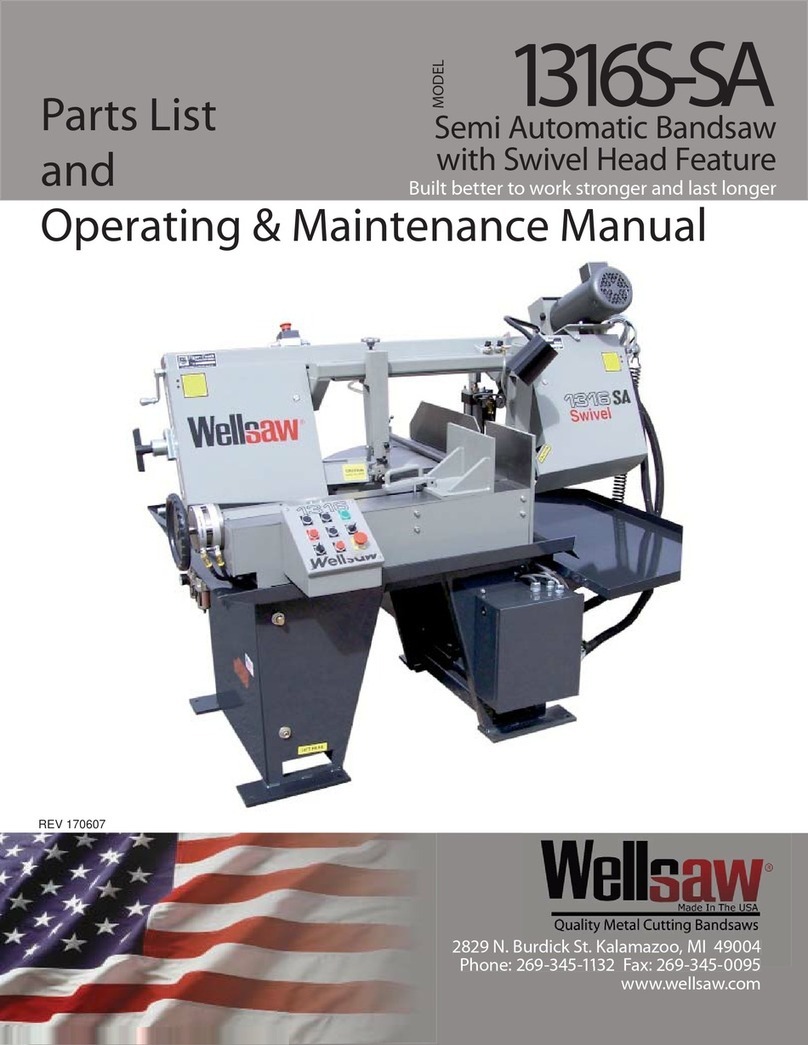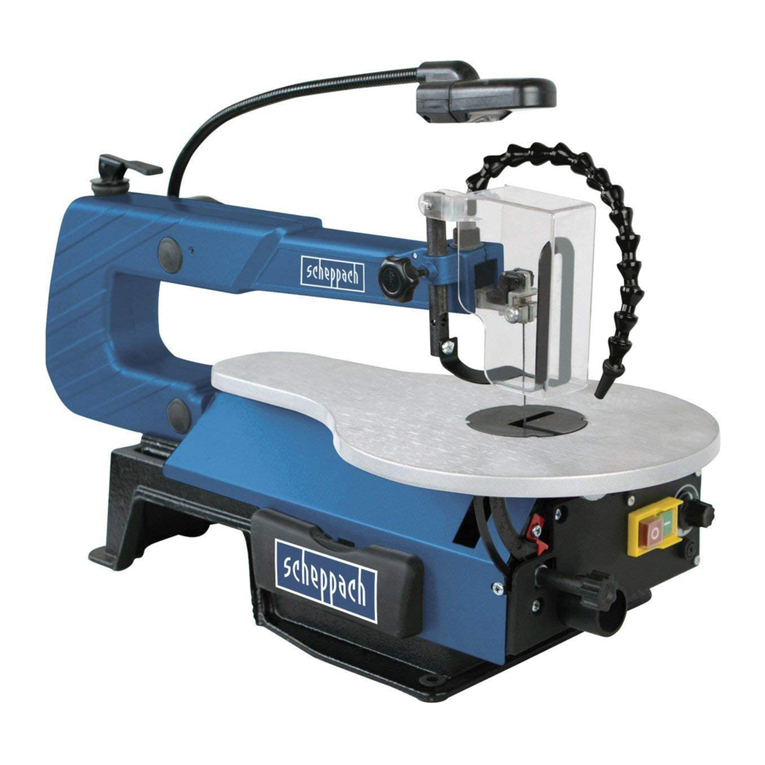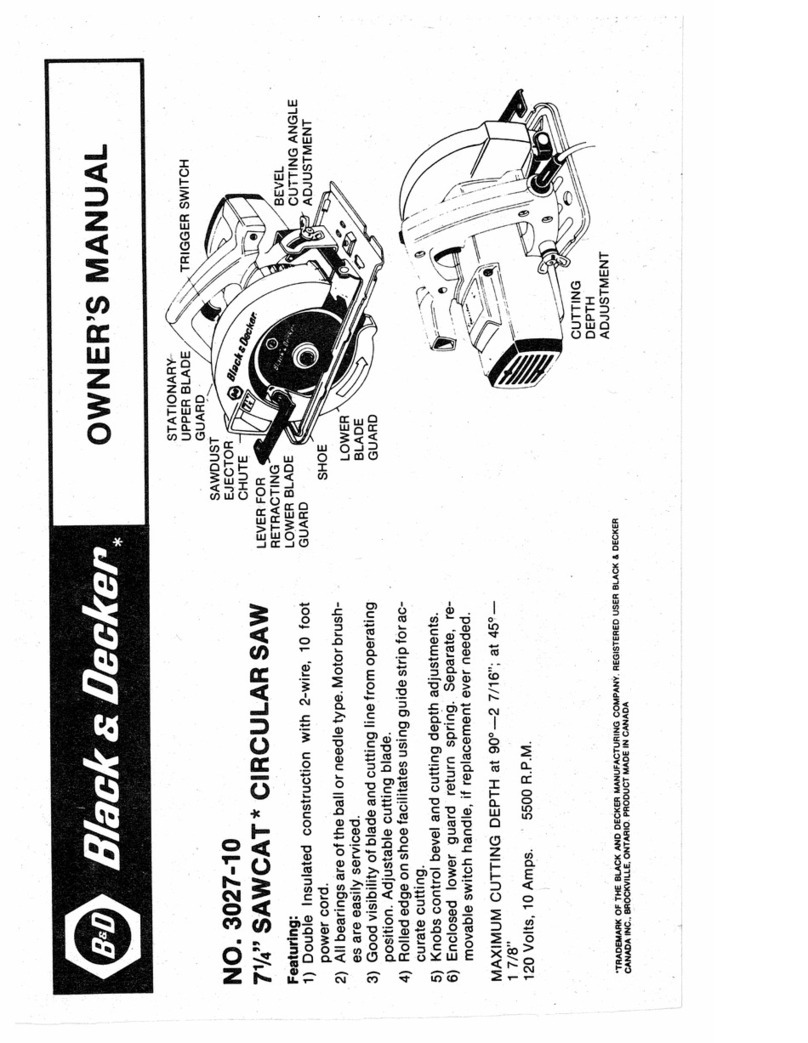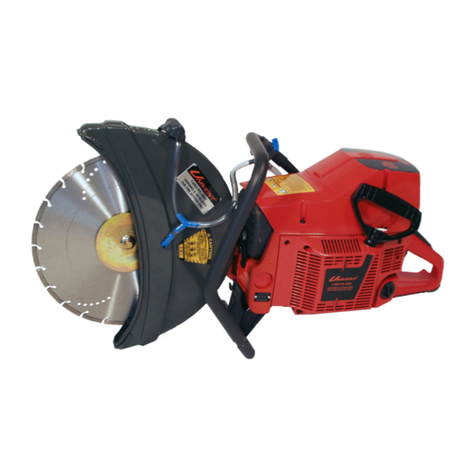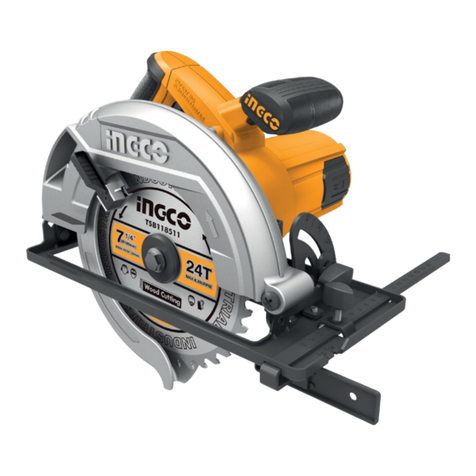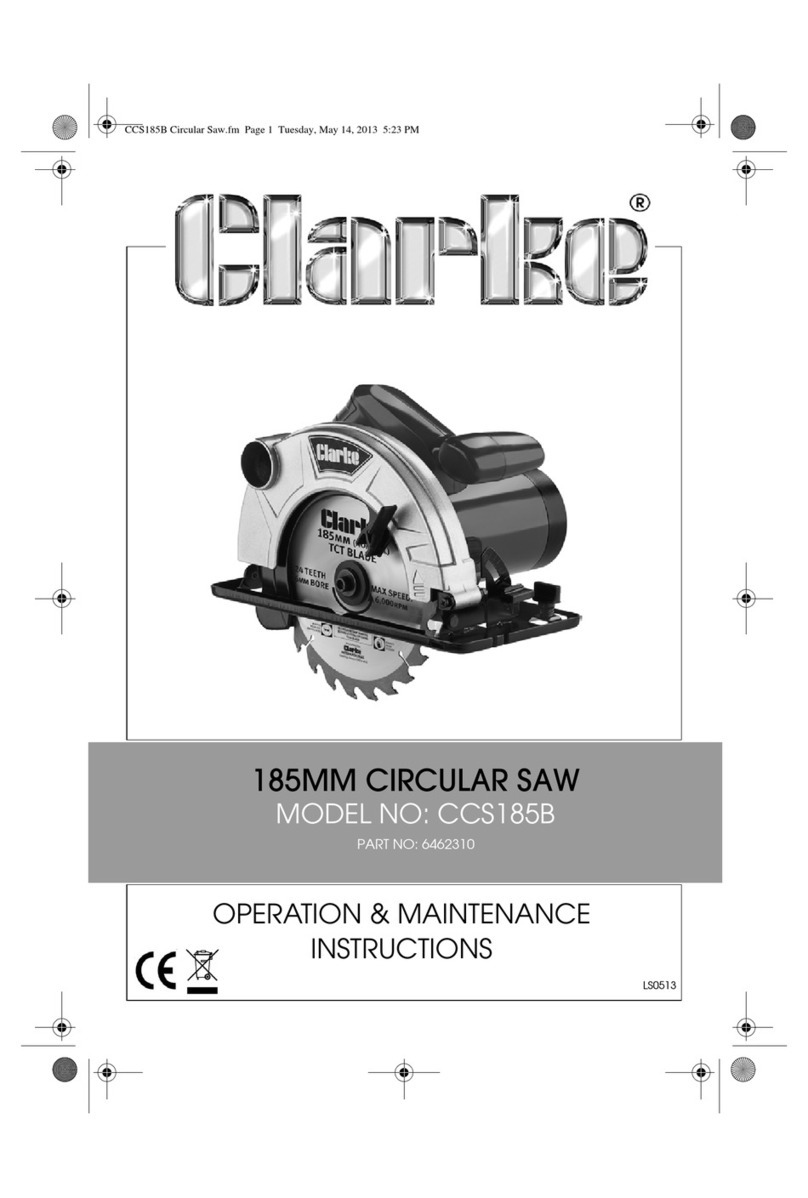
10
PLACING THE BLADE ON SAW
To insert a new blade, turn the Adjusting Knob
(item 17 in the parts diagram) on the blade guide
Counter Clockwise (CCW) until it stops. Insert
the new blade and turn the Adjusting Knob
Clockwise (CW) until it stops. The spring loaded
carbide guides will then be in proper contact with
the sides of the blade. The back of the blade
should just touch the carbide back up guide (15 in
the parts drawing). The side bearings should have
a gap of .038 for the .035 thickness blade.
Wheel Pitch Adjustment
If the saw blade runs too low, runs off the wheels,
or runs too high and rubs the wheel flange, a
wheel adjustment must be made.
Loosen the blade before making the following
adjust-ments.
Idler Wheel:
Blade running too low or off the wheel- adjust the
idler wheel block. Loosen the two cap screws in
the block, opposite the take up screw end, one-half
(Y2) turn. Tighten the opposite two cap screws
one-half (Y2) turn. Repeat if necessary.
Blade running too high and against the idler wheel
flange- The blade can become distorted, its top edge
rolled over and wheel flange will wear excessively.
To correct this, loosen the two cap screws closest
to the take up screw one-half (Y2) turn. Tighten
the opposite cap screws one-half (Y2) turn. Repeat
if necessary.
Drive Wheel:
Blade running too low or off the drive wheel-
Loosen the two cap screws opposite the outside
end of the wheel plate one-half (Y2) turn. Tighten
the two set screws on the same end one-half (Y2)
turn. Repeat if necessary.
Blade running too high, and against the drive
wheel flange- Loosen the cap screws closest to the
outside end of the wheel plate and loosen the two
set screws at the same time by the same amount.
Repeat if necessary.
Make certain all screws are tight after adjustments
have been made.
Variable Speed Drive
The Model 1118SA is equipped with variable
speed pulleys providing infinite speed selection
between 70 and 375 feet-per-minute. See Cutting
Speed Chart for settings.
To vary blade speed, rotate handwheel clockwise to
increase speed or counter-clockwise to decrease
speed. Do not adjust the speed unless the pulley
system is in operation (spinning). The handwheel
drag is set at the factory during assembly. This drag
prevents handwheel “creep” during operation but
still permits easy adjustment. Due to normal wear
and environment, the drag setting may change. To
readjust, tighten set screw in thrust nut.
Gear Box Repair
1. Remove gear box from saw.
2. Remove four machine screws holding gear box
together.
3. Separate gear box by carefully prying castings
apart at a location near pulley shaft. Caution: Do
not use excessive force.
4. Once the gear box is open, the internal parts
may be inspected for wear.
5. Liquid plastic gasket is used to seal the gear
case, Loctite No. 51580 or equivalent.
6. Grease, Mobilgrease XHP 220 or equivalent is
recommended. The grease must have excellent
clinging characteristics. (See Lubrication).
Fixed Vise Jaw
The two pins in the fixed vise jaw should be kept in
place in order to ensure square cuts. For cutting
angles, the pins must be removed and the turned to
the desired position and tightened with clamp bolts.
These pins enable operators to quickly relocate the
fixed vise jaw for approximate 90° cutting. For
final, accurate cutting, the fixed vise jaw should be
squared with the blade. (See Guide Alignment)
Sliding Vise Jaw
The sliding vise jaw is fitted with a lift plate and
ratchet dog for quick action. A hand wheel tightens
the vise on the workpiece. Excessive pressure is not
required to hold workpiece securely.
Hydraulic Feed Control
The feed rate is hydraulically controlled with a
needle valve located on the side of the saw bed.
Caution: Do not attempt to loosen or remove hoses
until the saw frame is supported in its “Down”
position.
Feed Pressure Adjustment
Maximum feed pressure is obtained with the frame
spring adjusted as close to the end of the saw frame
as possible. To decrease pressure, turn handle on
opposite end of frame counterclockwise. To increase
pressure turn handle in a clockwise direction. Use
lighter feed pressure when cutting thin-wall material
or irregular shapes.
